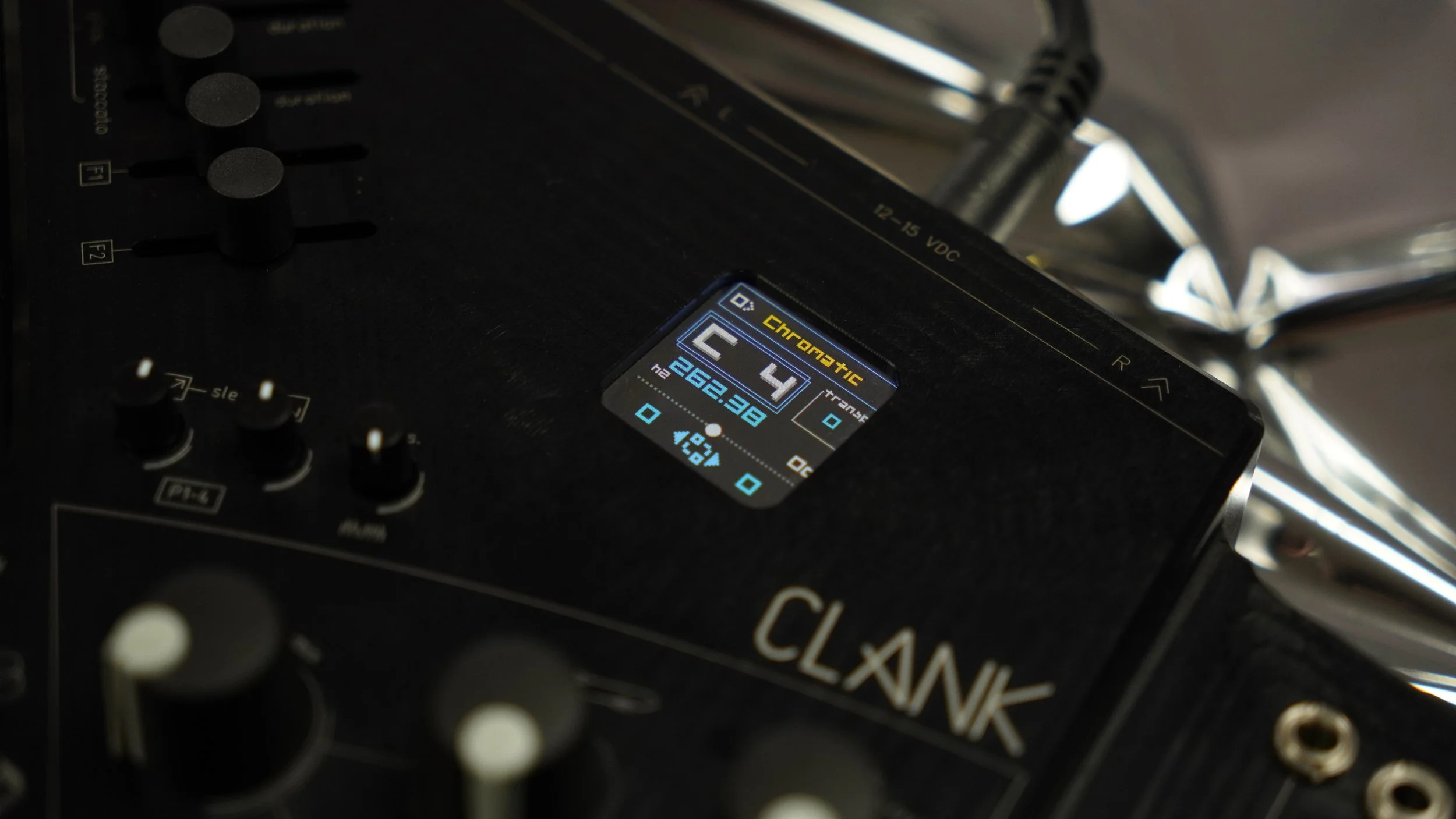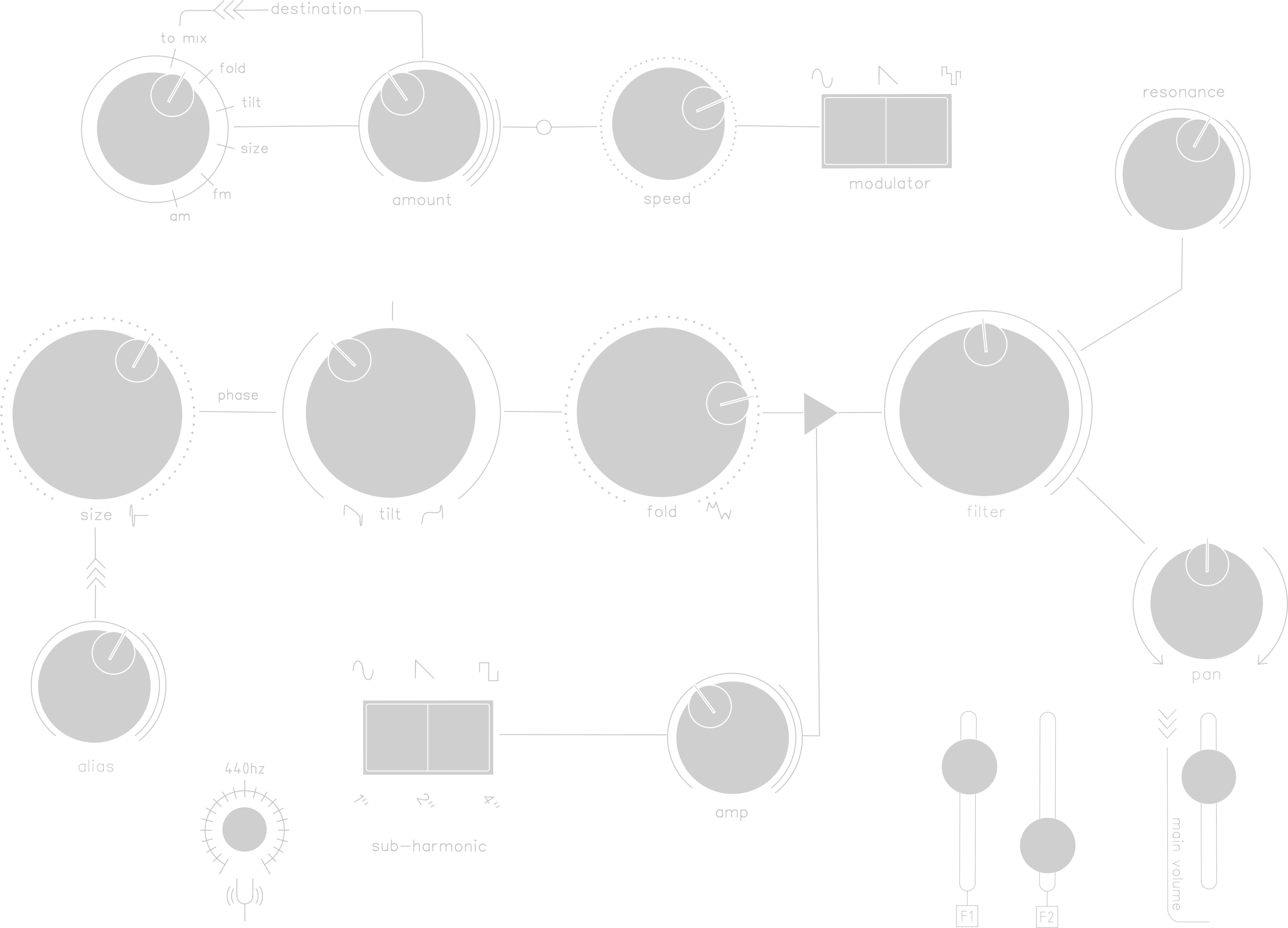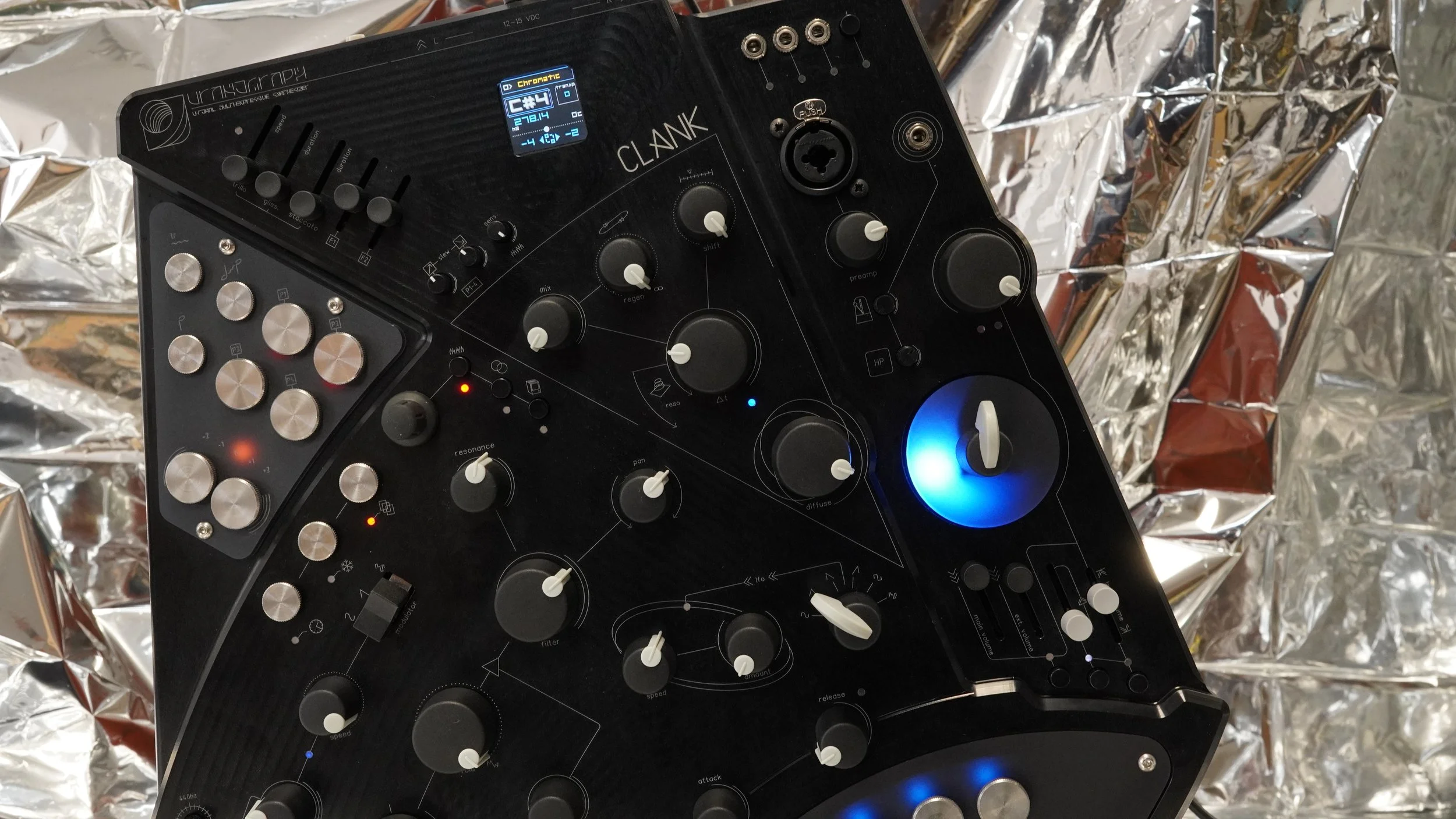
u-Tonal multi-expressive instrument
Uranograph is an electronic musical instrument that merges the expressive depth of classical instruments with the limitless possibilities of synthesis. A complete, self-contained world designed for live experimental performance, where every gesture, touch, and modulation is sculpted in real time.
Its capacitive tactile keys and instant note articulation encourage musicians to develop a deep connection with its behavior, refine their technique, and master its nuances.
With its ability to effortlessly reproduce microtonal notes, Uranograph is well-suited for exploring diverse musical expressions and cultural scales.
Its unique digital engine blends additive phase distortion with west-coast shaping, creating textures that feel raw, ancient, alien — like melodies echoing across a desert, or resonating in a distorted future city. Uranograph integrates an extensive 5-voice synthesis core, FX processing (both for internal and external sources), and a 2-reel looper into a seamless creative tool.
Uranograph is available for pre-order trough our resellers.
For those who already place a pre-order on our website, we will start to ship in September.
Units ordered trough are retailers will be shipped before the end of the year.photo blogfirmware updateretailersmediamanual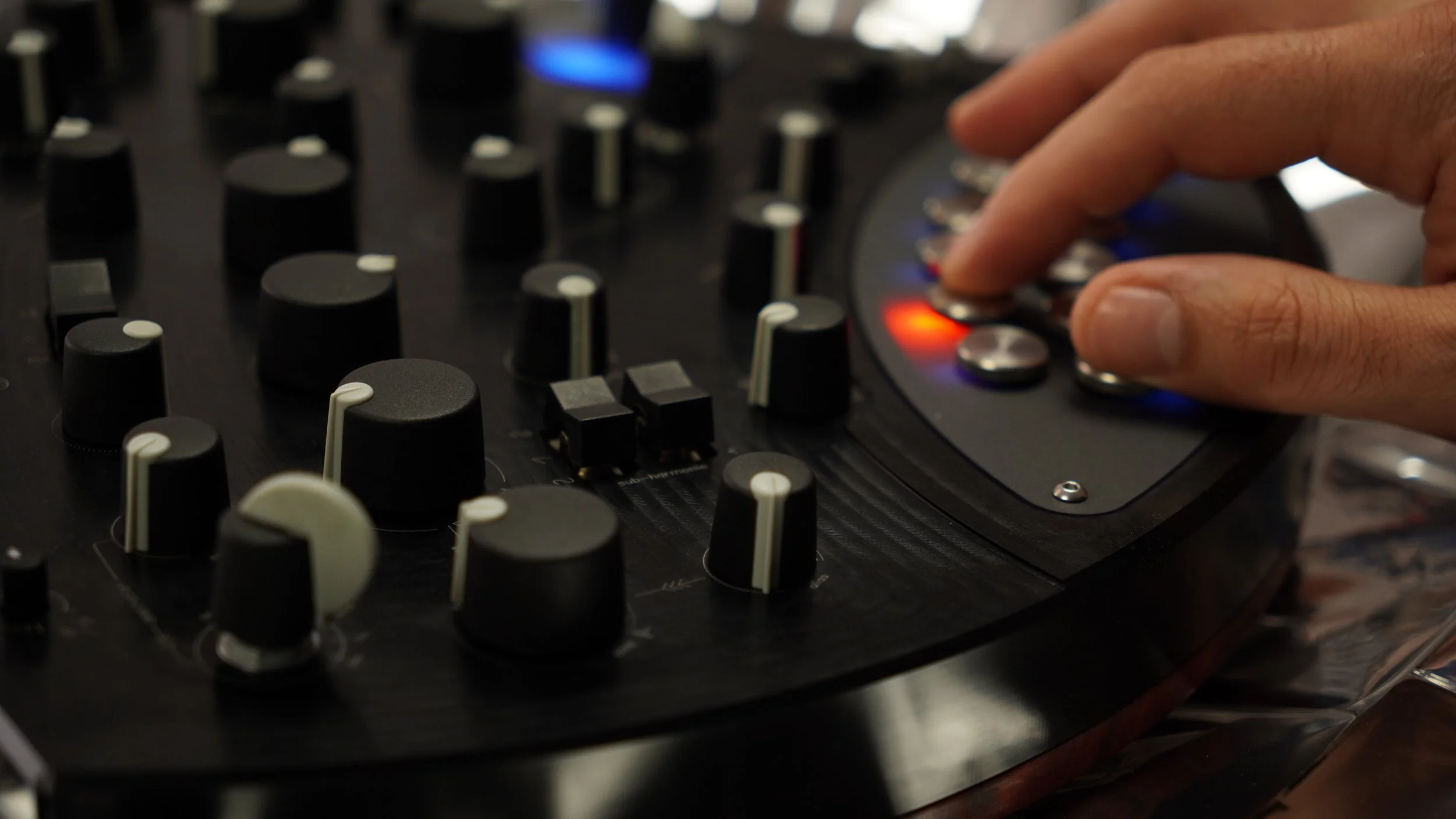
Performance
Keyboard
Uranograph's note keyboard serves as more than just an input device- it is the expressive heart of the instrument, providing a deeply responsive and flexible interface for performance and exploration of alternative tunings.
From the lightest tap to the deepest press, every gesture becomes sound. Bend, swell, brighten, or fade a note using only your fingers — just like on an acoustic instrument.
The keyboard becomes an extension of your expression — not just a controller, but your primary instrument.
Microtonal
flexibility
With a harmonic aliasing system, each keyplate can trigger up to three voices in harmony, following custom intervals.
Create per-key chords, shifting textures, or stacked harmonics with modulatable density.
Play full chords
from a single key
Each key can be easily assigned to any pitch or pure frequency, providing complete flexibility in keyboard layout design and tuning.
Whether adhering to traditional Western tuning, exploring Arabic maqams, Indian ragas, or experimental microtonal divisions, Uranograph provides an extensive range of tonal possibilities.
An ideal instrument for non-standard tuning, enabling deep engagement with diverse musical traditions and avant-garde soundscapes.
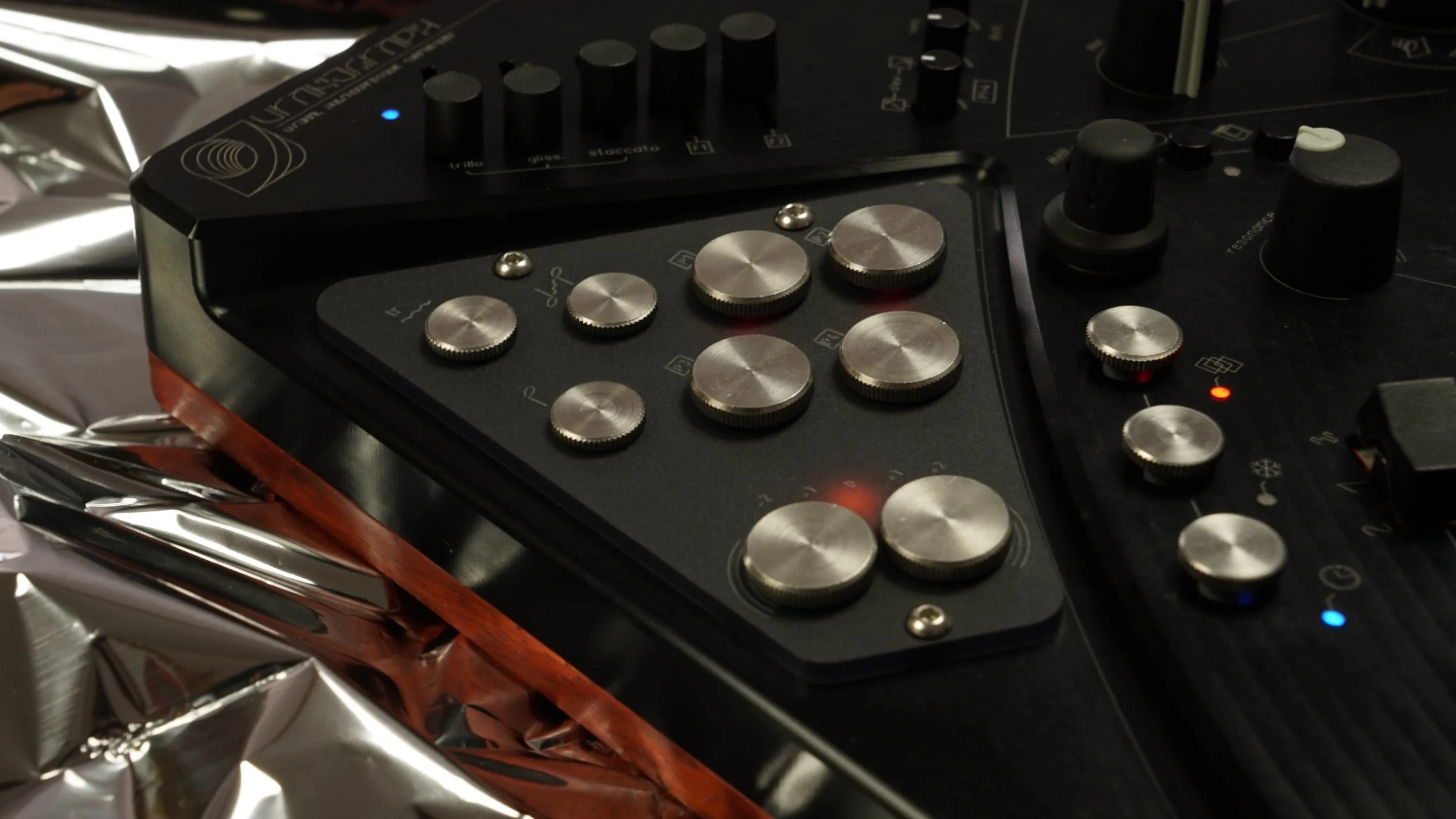
Control
keyboard
Uranograph features a dedicated control keyboard designed for dynamic, hands-on sound transformation. Unlike traditional mod wheels or faders, this touch-based control surface enables real-time interaction with synthesis parameters, allowing for expressive, gestural modulation.
The control keyboard is divided into three functional sections: Articulation, Octave Shift / Pitch bend, and ModKeys.
Advanced phrasing
techniques
Three articulation plates provide instant access to canonical articulations found in stringed instruments:
glissando (smooth pitch slides between consecutive notes)
trillo (alternates between notes)
staccato (different envelope engine that shortens note duration and create percussive attack)
Real-time
modulation
Two ModKeys plate dynamically responds to pressure, enabling simultaneous control over multiple parameters.
By integrating expressive modulation gestures with the performance keyboard, players can shape fluid, evolving textures that respond organically to touch—enhancing expressivity and immediacy in synthesis.
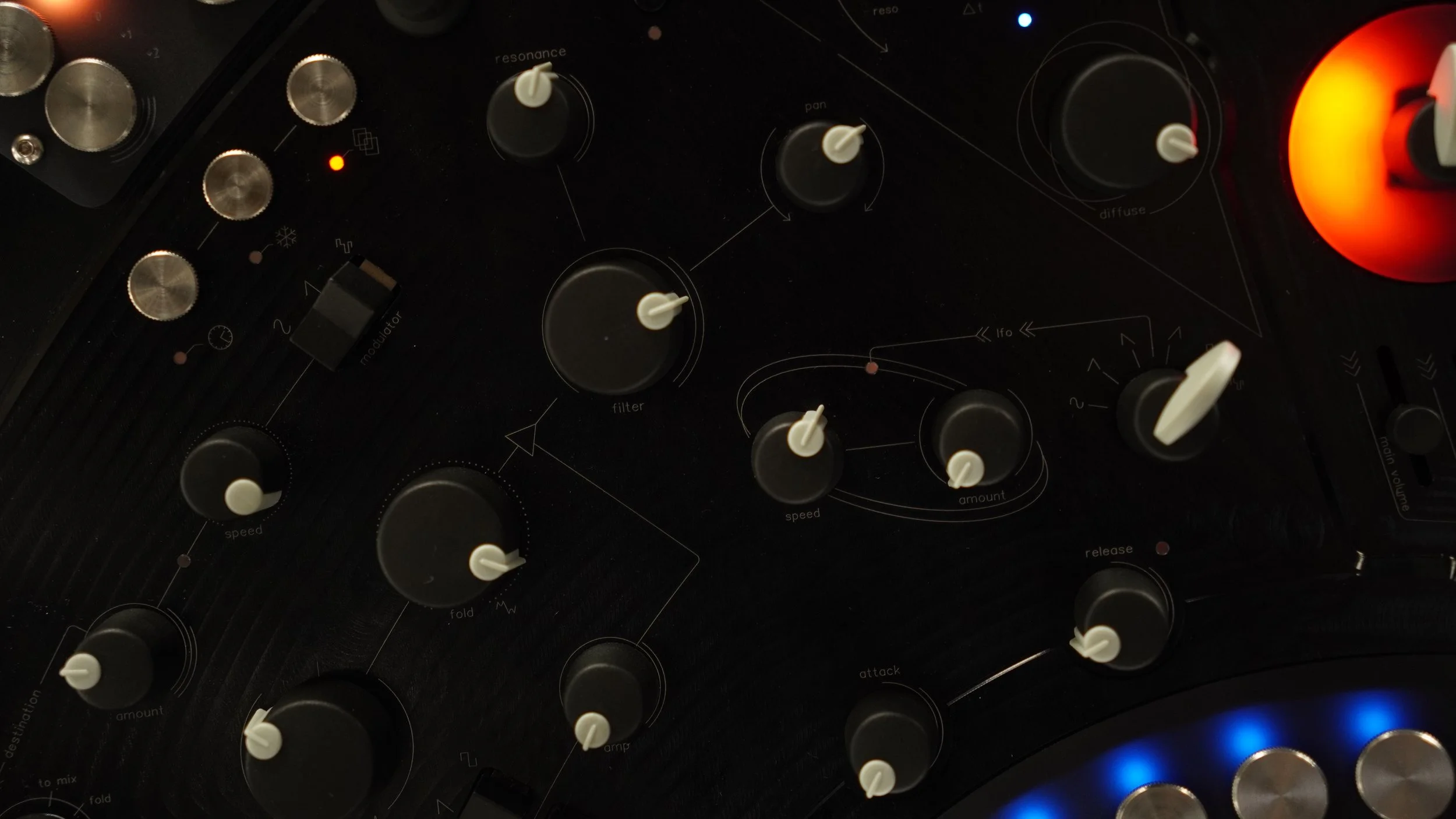
Synthesis
Core
Uranograph’s digital engine is rooted in additive and phase-morphing synthesis, offering a unique and expressive way to shape its five oscillators.
At its core lies a sine wave oscillator, which serves as the foundation for tone sculpting. Through three key parameters — Size, Tilt, and Fold — this pure waveform can be bent, skewed, and folded into a wide range of timbres.
By manipulating phase rather than filtering harmonics, Uranograph produces sounds that evolve organically — from warm, bell-like tones to sharp, metallic textures.
A dedicated sub-oscillator reinforces the low end, adding weight and depth.
Staying true to West Coast synthesis traditions, Uranograph also includes a secondary oscillator, which can operate as an additional sound source or as a modulator at both audio and low frequencies — expanding the instrument’s potential for complex, cross-modulated timbres.
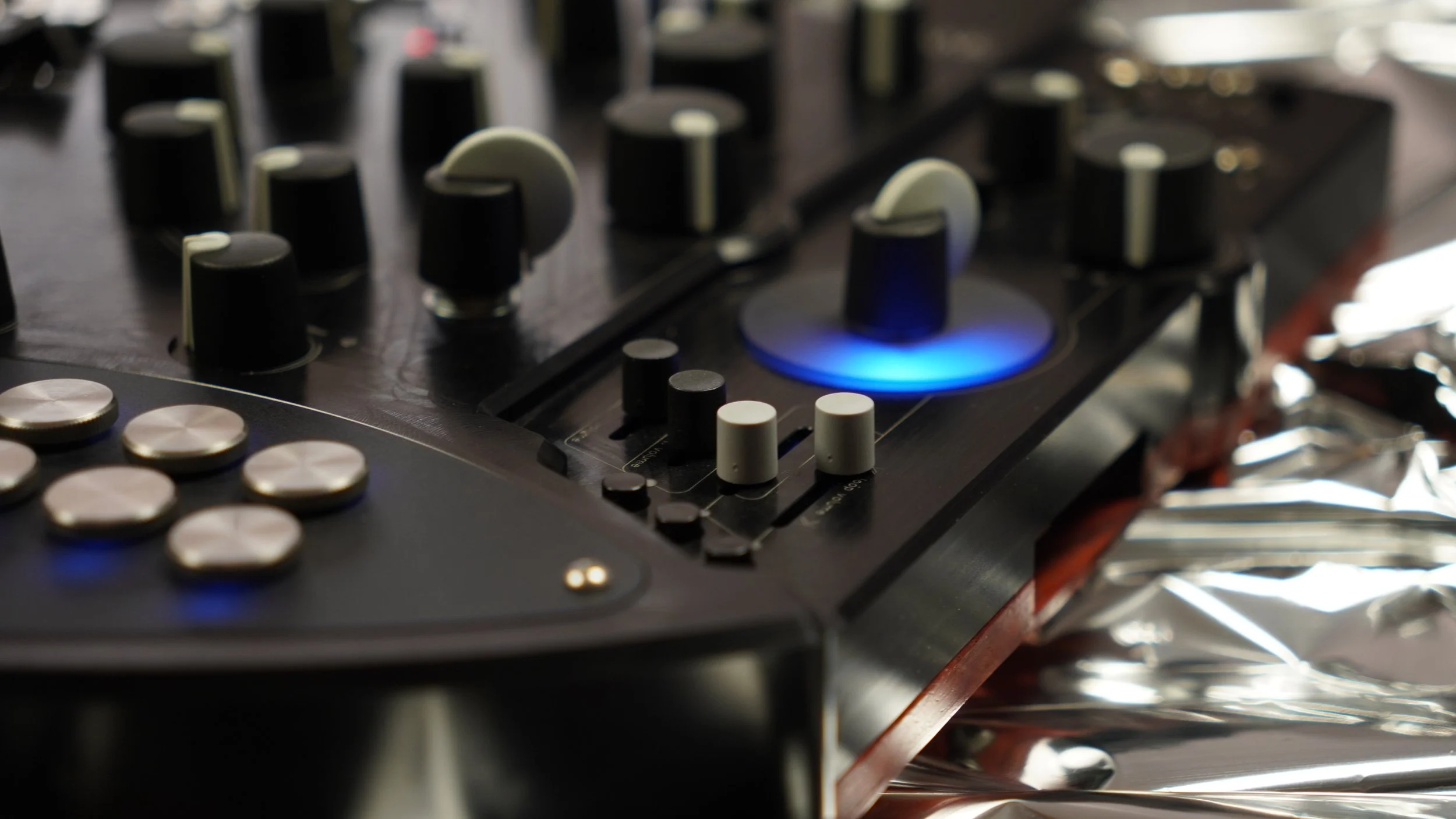
FX
Stereo morphing delay
Uranograph’s delay is designed for polyrhythmic textures and spectral shaping, merging classic echo behavior with Karplus-Strong-inspired resonation.
It morphs smoothly between rhythmic repetition and tonal reinforcement, becoming both a time-based effect and a sonic enhancer.
Diffuse
From tight, reflective rooms to vast, enveloping ambient clouds, Uranograph’s reverb gives you full spatial control with a single knob. Whether you’re adding subtle presence or immersing your sound in cinematic atmosphere, the transition is seamless and expressive — making space an integral part of your performance.
Two reel tape looper
At the heart of Uranograph’s sonic capabilities is its dual-reel tape looper, built for advanced real-time recording, overdubbing, and layering.
Main features:
One‑shot mode – Waits for audio, then records a fixed-length loop.
Continuous mode– Inspired by Frippertronics, it records endlessly, evolving with each pass.
Re-Pitch: loops can be repitched and triggered melodically from the keyboard—turning captured sound into a playable instrument.
The two reels are time and volume-independent and capture the post-effect mix.
Specifications
Dual-CPU digital instrument with 24-bit codec
Precision CNC-machined from a solid aluminum block, anodized and laser-engraved for durability
350 × 360 mm dimensions
Stainless steel capacitive touch plates, offering long-lasting life
Touch-bend surfaces crafted from special opaline black plexiglass
VESA 75x75 M6 screws on the back
50 Keyboard layouts
3x Oscillators synthesis core
2x Additional aliasing oscillators
1x Complex assignable LFO
External input with XLR/6,3mm combo input with preamp and phantom power
Stereo morphing delay
Single knob diffuse control
Two-reel performative tape looper
Performative save and recall with a capacity of 96 presets
Metronome for live performance, routed only to the headphones
High-quality headphones output via a 3.5mm jack, featuring a dedicated level control
Dual balanced line-level TRS outputs
1x combo 3,5mm analog clock IN/MIDI clock in
1x assignable CV in
1x 3,5mm analog clock OUT
Power: 15V center-positive DC adapter.







